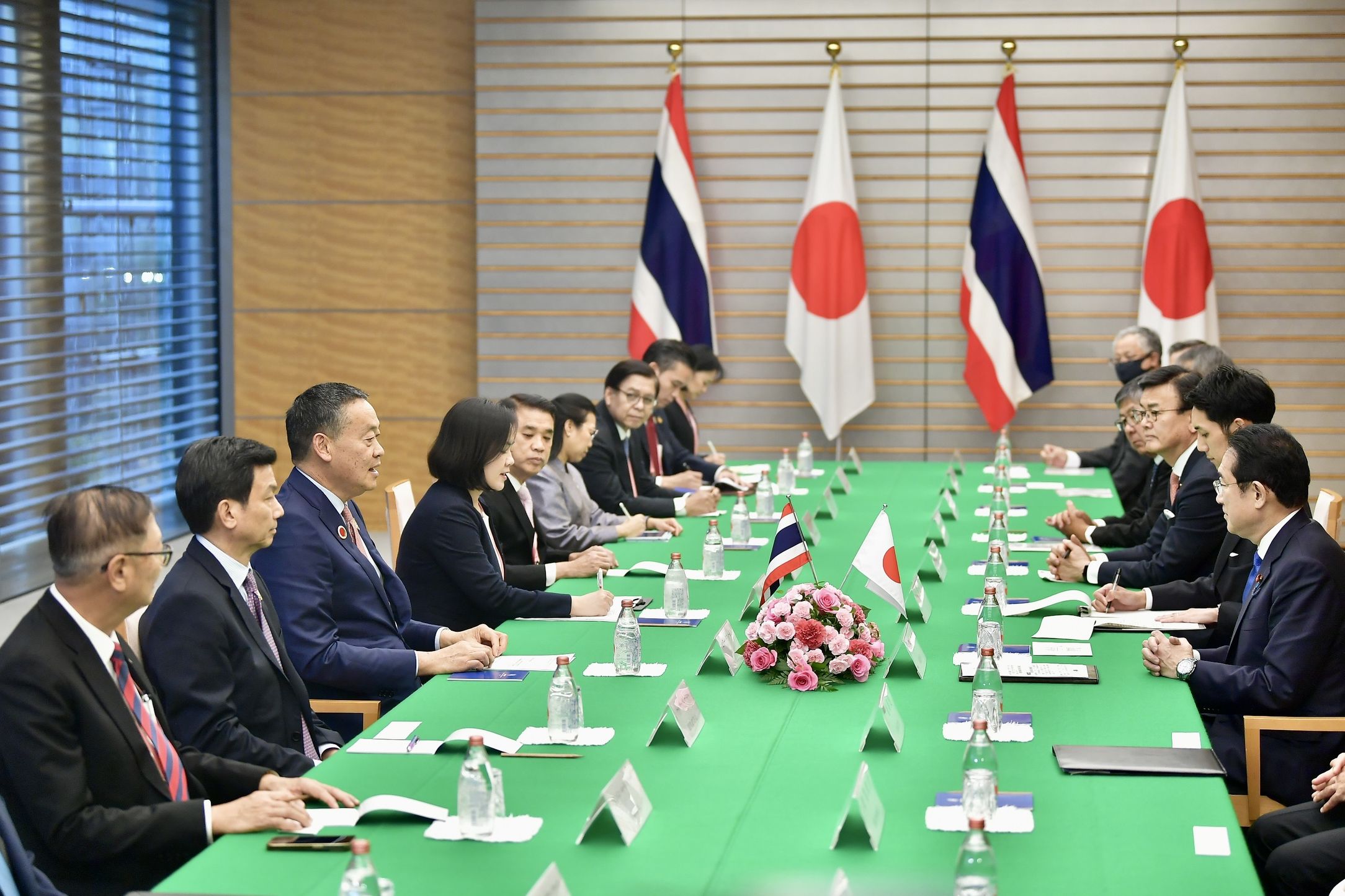The government convinced 30 Japanese companies
The government convinced 30 Japanese companies
Chatrudee Theparat
The government convinced 30 Japanese companies to invest in Thailand’s Southern Landbridge project.
The government organized a seminar “Thailand Landbridge Roadshow” with 30 Japanese companies participants convincing them to invest in the project.
Prime Minister Sreetha Thavisin opened the seminar under a title “Thailand Landbridge Roadshow” at Imperial Hotel, Japan in order to convey southern land-bridge project’s information to 30 Japanese companies.
Government spokesman Chai Wacharonke said PM Sreetha convinced the investors that the Thai government will implement the land-bridge project because Thailand is potential to become transshipment hub in the region and a possibility to become a logistic hub of the global.

“Thai government is ready to pay attention to suggestions from Japanese investors on the development Thailand’s landbridge project.” Mr Sreetha told the investors
Mr Sreetha said the Malacca Strait is the main regional shipment route for countries bordering the Pacific and Indian Oceans. A quarter of the world's trade passes through the Malacca Strait, and more than 70% of oil exported from the Middle East is transported through the Malacca Strait also. This makes the Malacca Strait the most congested shipping bottleneck in the world.
Globally, there is a total annual trade value of 38 trillion dollars. Asia is the region with the highest export and import values, at approximately 40%, followed by Europe, at approximately 38%. For such trade by sea between Asia and Europe, container ships have to pass through the Malacca Strait.
There are approximately 90,000 vessels with 70.4 million cargo container passing through the Malacca Strait each year, which increase every year by 2.35 % on average. This amount is now expected to exceed the capacity of the Malacca Strait by 2030. If the Malacca Strait becomes even more congested, serious economic consequences are likely.
It is expected that shipping commodities through the Malacca Strait will face more problems in the future, including more travel time and cost. This is because vessels have to wait several days and thus incur significant opportunity cost and cost due to spoilage of goods during delay.
Owing to its strategic location at the heart of the Indochinese Peninsula and linkage between the Pacific Ocean and the Indian Ocean, Thailand has developed into a key strategic hub for production and transportation. The Landbridge will be an additional important route to support transportation and an important option for resolving the problems of the Malacca Strait. This will be a cheaper, faster, and safer route.
Comparing costs and time for transportation through the Landbridge versus the Malacca Strait, the potential target group for Landbridge was identified as feeder vessels.
Cargos from China and European countries transported by mainline vessel will be distributed by feeder vessels in this area save at least 4% on costs and 5 days in time.
Products travelling from Southeast Asia to Central Asia and the Middle East using feeder vessels crossing between the Indian Ocean and the Pacific Ocean can save at least 4% on costs and 3 days in time.
Products from Thailand, Laos, Cambodia, and South China to Philippines, Indonesia, the Middle East can be distributed via feeder vessels at the Landbridge to various regions. These will save up to 35% in costs and 14 days in time.
In summary, transporting cargo via the Landbridge will reduce travel time by 4 days and reduce costs by 15% on average.
The total cargo volume at the western port will be 19.4 million TEUs and that eastern port will be 13.8 million TEUs, accounting for approximately 23% of Malacca’s port total cargo shipment.
This will cement Thailand as the hub for transportation and commerce. And as major connecting point between the east and the west, it will also hold significant strategic importance.
For crude oil, the amount produced from the Middle East for shipping is approximately 19 million barrels per day. 56% or approximately 10.7 million barrels per day passes through the Malacca Strait, with 44% going to the Asian Far East and the remaining 7% going to Southeast Asia. The Landbridge is particularly attractive for this 7% since it will help save at least 6% in cost.
In addition, investors can benefit from the Landbridge development in service sector via enchanted logistics, real estate, and banking, in the primary sector via enhanced agriculture output, and in the industrial sector via new S-curves and manufacturing.
The Landbridge will drive the overall national economy creating 280,000 jobs and Thai GDP is projected to grow by 5.5% per year or the equivalent of 670 billion dollars when the project is fully implemented.
“I believe this presents an unprecedented opportunity to invest in this commercially and strategically important project that connects the Pacific Ocean and the Indian Ocean, connecting people in the East with the West. I would like to invite you all to explore this opportunity to become partners in this historic project and benefit from it together.”
18 December 2023
Viewed 167 time
 EN
EN 




